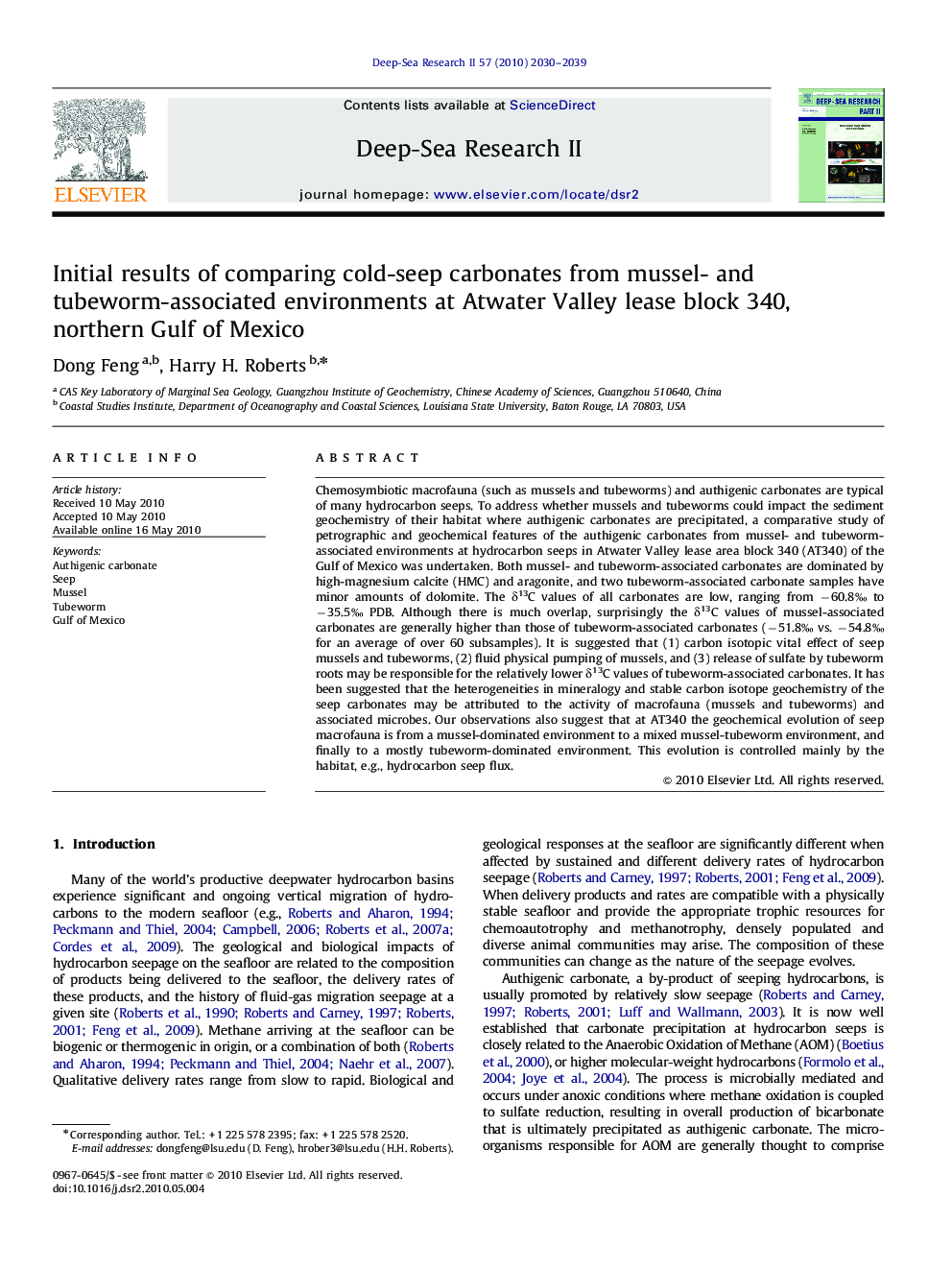| کد مقاله | کد نشریه | سال انتشار | مقاله انگلیسی | نسخه تمام متن |
|---|---|---|---|---|
| 6384365 | 1626471 | 2010 | 10 صفحه PDF | دانلود رایگان |
عنوان انگلیسی مقاله ISI
Initial results of comparing cold-seep carbonates from mussel- and tubeworm-associated environments at Atwater Valley lease block 340, northern Gulf of Mexico
دانلود مقاله + سفارش ترجمه
دانلود مقاله ISI انگلیسی
رایگان برای ایرانیان
کلمات کلیدی
موضوعات مرتبط
مهندسی و علوم پایه
علوم زمین و سیارات
زمین شناسی
پیش نمایش صفحه اول مقاله

چکیده انگلیسی
Chemosymbiotic macrofauna (such as mussels and tubeworms) and authigenic carbonates are typical of many hydrocarbon seeps. To address whether mussels and tubeworms could impact the sediment geochemistry of their habitat where authigenic carbonates are precipitated, a comparative study of petrographic and geochemical features of the authigenic carbonates from mussel- and tubeworm-associated environments at hydrocarbon seeps in Atwater Valley lease area block 340 (AT340) of the Gulf of Mexico was undertaken. Both mussel- and tubeworm-associated carbonates are dominated by high-magnesium calcite (HMC) and aragonite, and two tubeworm-associated carbonate samples have minor amounts of dolomite. The δ13C values of all carbonates are low, ranging from â60.8â° to â35.5â° PDB. Although there is much overlap, surprisingly the δ13C values of mussel-associated carbonates are generally higher than those of tubeworm-associated carbonates (â51.8â° vs. â54.8â° for an average of over 60 subsamples). It is suggested that (1) carbon isotopic vital effect of seep mussels and tubeworms, (2) fluid physical pumping of mussels, and (3) release of sulfate by tubeworm roots may be responsible for the relatively lower δ13C values of tubeworm-associated carbonates. It has been suggested that the heterogeneities in mineralogy and stable carbon isotope geochemistry of the seep carbonates may be attributed to the activity of macrofauna (mussels and tubeworms) and associated microbes. Our observations also suggest that at AT340 the geochemical evolution of seep macrofauna is from a mussel-dominated environment to a mixed mussel-tubeworm environment, and finally to a mostly tubeworm-dominated environment. This evolution is controlled mainly by the habitat, e.g., hydrocarbon seep flux.
ناشر
Database: Elsevier - ScienceDirect (ساینس دایرکت)
Journal: Deep Sea Research Part II: Topical Studies in Oceanography - Volume 57, Issues 21â23, November 2010, Pages 2030-2039
Journal: Deep Sea Research Part II: Topical Studies in Oceanography - Volume 57, Issues 21â23, November 2010, Pages 2030-2039
نویسندگان
Dong Feng, Harry H. Roberts,